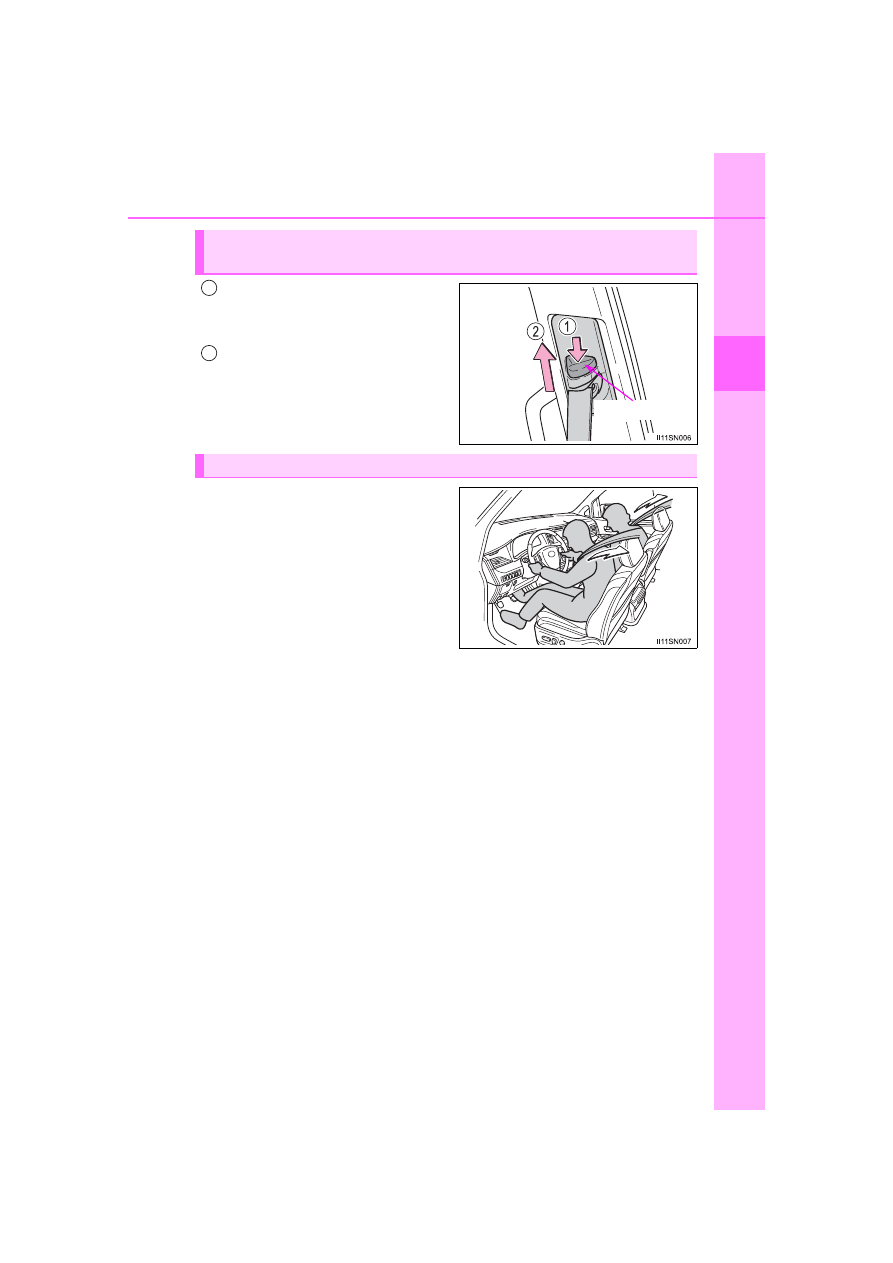Toyota Sienna (2019 year). Manual - part 3

33
SIENNA_OM_OM08025U_(U)
1
Push the seat belt shoulder
anchor down while pressing the
release button.
Push the seat belt shoulder
anchor up.
Move the height adjuster up and
down as needed until you hear a
click.
The pretensioners help the seat
belt to quickly restrain the occu-
pant by retracting the seat belt
when the vehicle is subjected to
certain types of severe frontal or
side collision or a vehicle rollover.
The pretensioners do not activate
in the event of a minor frontal
impact, a side impact or a rear
impact.
Adjusting the seat belt shoulder anchor height (front and second
outside Tip-up seats)
Release button
1
2
Seat belt pretensioners (front seats)